Vote for Lismore’s greatest sports stars of all time
The Lismore Shire has a long history of producing world-champion sports stars. See who made our list of the region’s greatest sporting legends of all time.
Local Sport
Don't miss out on the headlines from Local Sport. Followed categories will be added to My News.
Some of Australia’s greatest ever athletes have cut their teeth on the fields, pools and courts of Lismore.
From soccer, to rugby league, baseball and cricket, the region has produced countless sports stars who have mixed it with the world’s best.
We have compiled a list of the top 20 sportspeople from the region, featuring those who either grew up or spent a significant portion of their formative years in the Lismore Shire.
See the full list, and don’t forget to vote below on you think should be number one.
Warren Birmingham
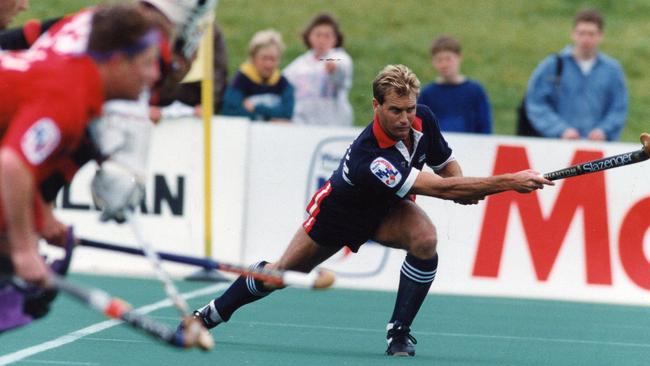
When it comes to hockey in Australia, there are few held in such high esteem as Warren Birmingham.
Raised in the hockey-mad town of Coraki, ‘Buster’ cut his teeth on the town’s hockey fields as a junior before debuting for the Kookaburras in 1984.
He represented Australia at the 1988 Olympics, where the team finished fourth, and led the Kookaburras as captain in Barcelona four years later.
After scoring 20 goals and conceding just two in the preliminary games, Australia then got past the Netherlands before losing narrowly to Germany, 2-1, in the gold medal match.
Over the course of his 200 games for the national team, Birmingham scored 44 goals, represented Australia in four world cups and 11 Champions Trophy tournaments, of which he won five.
In terms of personal accolades, he was awarded the International Player of the Year in 1992 and was named in a remarkable nine consecutive World XI teams.
It was no surprise then that Birmingham, who remained involved with hockey by coaching NSW representative teams after hanging up the boots, was one of the inaugural inductees into Hockey Australia’s Hall of Fame in 2008.
Arthur Black

A giant of the greens, South Lismore’s Arthur Black was one of the Northern Rivers’ greatest ever lawn bowlers who enjoyed an incredible representative career that included donning the green and gold at the Commonwealth Games.
Over the course of his incredible 40-year career as a competitive lawn bowler, Black represented New South Wales 121 times and Australia on 28 occasions.
This included winning gold in the men’s fours and silver in the men’s pairs at the inaugural Asia-Pacific Bowls Championships, held at Tweed Heads in 1985.
On the global stage, Black partnered up with Kevin Henricks to represent Australia at the 1986 Commonwealth Games in Edinburgh, overcoming unbelievable conditions to place ninth.
As Black later said, they were “playing at 10 o‘clock at night in pouring rain on saturated greens”.
Back home, he also won the prestigious Northern Rivers District Bowls Association title five times and was made a life member of the South Lismore Bowling Club.
In 2016 Black and Australia‘s most decorated bowler Rex Johnston, better known as Paddles, were honoured by a trophy known as the Black Paddles Shield, contested between local Zone One and Zone 11 (Manning district) senior sides.
He passed away in 2017.
James Carlton
A lightning quick sprinter who was twice robbed of a world record by a technicality, James Carlton was an early star of Australian track and field.
Born in South Lismore in 1909, Carlton was educated at Marist Brothers before moving to Sydney as a teenager.
It was in the capital that he won a series of school championships, including setting GPS records in the 400 yards, 220 yards and 100 yards sprint events.
Carlton attracted significant public attention while still at school after he ran 100 yards in 10.0 seconds and the 220 yards in 21.8 – records that both stood for 29 years.
Then in March 1927, just turned 18, he won the NSW senior titles in the 100 and 220 yards. Later that year he won the 100-yard and 200-yard events at the Australasian Games.
Carlton qualified for the 1928 Amsterdam Olympics in the 100 and 200 metres but only made it as far as the quarter finals, reportedly hampered by illness.
Although the meet didn’t go to plan, Carlton dominated the athletics scene domestically, winning the 100- and 200-yard double on three consecutive occasions, in 1928, 1930 and 1932, while his 100-yard national record of 9.6 seconds stood for 23 years.
During a meet in Newcastle in 1931, Carlton famously equalled the 100-yard world record of 9.4 seconds, held by US champion Eddie Tolan, however the record was not considered legitimate as the time had only been taken on two stop watches.
The following year he broke the world record of the 220-yard event by running 20.6 seconds at the SCG, only for the record once again to be scrapped as the run was controversially judged to have been wind assisted.
Although considered one of the first athletes picked for the 1932 Olympics in Los Angeles, Carlton retired from athletics to join the priesthood.
He tragically died in 1951, aged just 42, due to complications associated with asthma.
Lisa Casagrande
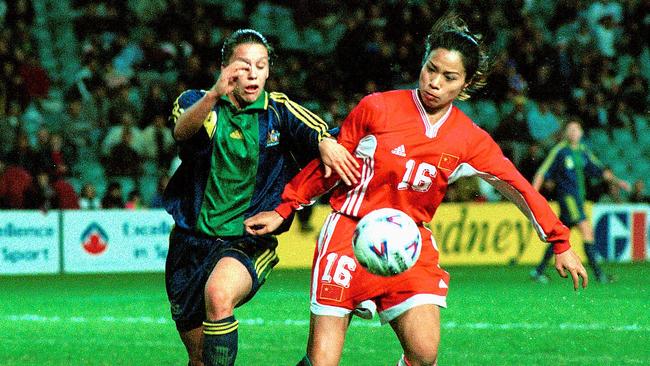
A supremely talented midfielder who broke new ground for female footballers, Casagrande enjoyed a successful international and club career before it was cruelly cut short by injury.
A junior with Goonellabah and then the Northern NSW rep team, Casagrande made her international debut for the Matildas at just 14 when she took the field against Japan in 1994.
In the same year, she became the first female AIS scholarship holder invited to train with the institute’s men’s team, taking to the training pitch alongside future men’s internationals Lucas Neill and Josip Simunic.
She played in two world cups, in 1995 and 1999, and represented the national team at the Sydney 2000 Olympics.
In terms of her club career, after playing for the Canberra Eclipse in Australia’s premier women’s league in the late 1990s, Casagrande moved to the US to play for Portland Pilots.
In 1999 Casagrande was the youngest Australian to be awarded 50 caps, and played 64 times for the national team before injury ended her career at just 22.
Casagrande was named in the Matildas’ Team of the Decade for the 1990s, and in 2015 was inducted into Football Australia’s Hall of Fame.
Tom Cooper
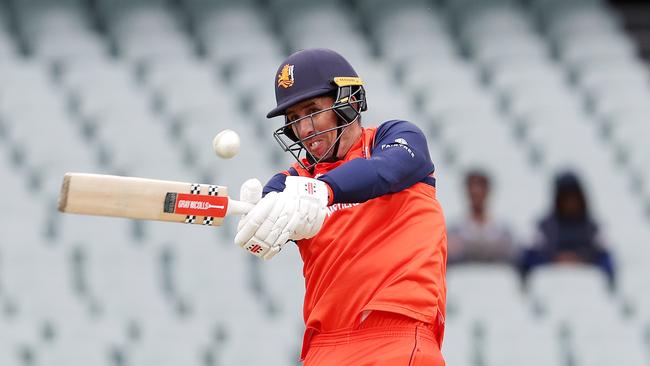
Lismore’s favourite Dutchman, Cooper holds the rare distinction of having represented two countries in cricket.
A gun Lismore junior, Cooper moved to Sydney to play for the University of NSW in the Sydney grade competition in the hope of cracking the NSW state side.
But with a plethora of batsmen standing between him and a NSW cap, Cooper made the switch to join South Australia in 2008, where he enjoyed a 12-year career with the Redbacks as a middle-order batsman and part-time off-spinner.
Cooper immediately made his home state pay, scoring an unbeaten 101 from 108 balls against NSW in just his fourth one-day game for South Australia.
As Cooper became a regular for the Redbacks he discovered in 2009 that he was eligible to play for the Netherlands’ national team, on account of his mother being born in Dutch New Guinea, and made his debut for the country a year later.
He represented the Netherlands at the 2011 ICC World Cup, where he averaged 57.75 with the bat.
Cooper then really hit his stride at domestic level, scoring 881 runs at 51.82 in the 2013-14 season, which included an unbeaten 203 against NSW, to earn Australia A selection.
Although he has never played for the Australian first XI in international matches, Cooper went on to play for the Netherlands at T20 World Cups in 2014 and 2016, and then again most recently at the 2022 T20 World Cup.
The 35-year-old has shown that he can still mix it with the best, scoring 32 in the Netherlands’ five-wicket win over Zimbabwe, and backing that up with a handy 35 in the team’s famous 13-run victory over South Africa.
Craig Foster
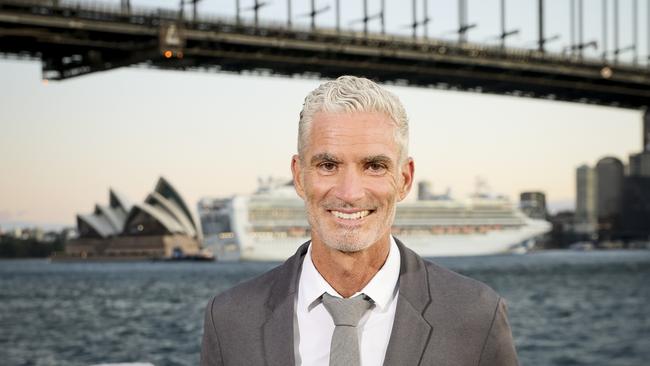
One of Australian soccer’s most recognised faces and voices, Foster has enjoyed a successful career as a footballer, pundit and human rights advocate.
Growing up in Lismore and attending Kadina High, Foster’s first taste of professional football was with Sydney United in the NSL in 1988. An industrious midfielder, he subsequently enjoyed a 15-year club career that took him to Singapore, Hong Kong and England, before retiring in 2003.
Foster made 29 appearances for the Socceroos, scoring nine goals and was the Australian men’s team’s 40th captain. Foster played in one of the most infamous moments in Australian football history, when the team went down to Iran on away goals during qualifying for the 1998 World Cup.
A staunch advocate of attacking, possession-based football, after his playing days Foster established himself as one of the country’s premier football analysts, working alongside broadcasting greats Johnny Warren and Les Murray as part of his almost two-decade career with SBS.
In recent times Foster has turned his attention to human rights.
In late 2018 and early 2019 he lead a global advocacy and lobbying campaign for the release of Australian resident and footballer Hakeem al-Araibi, a Bahraini refugee imprisoned in Thailand.
Foster worked closely with Australian government officials, human rights organisations and lobbied organisations like FIFA and the UN in a campaign that ultimately led to the release of Hakeem and safe return to his young wife in Australia.
Ahead of the 2022 World Cup, Foster has also been a vocal critic of FIFA’s decision to award Qatar the hosting rights, and was recently named NSW’s Australian of the Year.
Peter Gahan
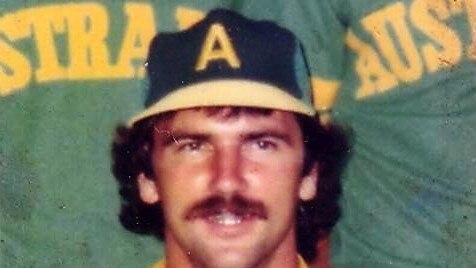
In a baseball-mad town like Lismore with famous families like the Meaghers and the Buckleys, Peter Gahan was arguably the greatest player of the most remarkable baseball clan: the Gahan family.
The Gahans have produced more Far North Coast, state and national representatives than any other family in the region, with the likes of Michael, Danny, Terry, Anthony, Matt, Andrew, another Michael and Jordan Gahan all playing representative baseball at some level.
A Marist Brothers junior, Peter first made his international debut in 1979, when Australia took on Japan at Oakes Oval. He backed that up a year later when the South Korean team arrived in town.
A talented utility who could field at catcher, third base, second base and in the outfield, as well as pitch, Peter made 45 appearances for Australia and represented Queensland in the Claxton Shield (on account of Far North Coast Baseball being affiliated with Baseball Queensland) for the best part of a decade.
Locally, he won the Huckleberry Medal for MVP in the Far North Coast competition five times, and is the only FNC player to have his number, 17, retired.
Post-playing, the 66-year-old has remained involved with the sport as a coach, and was inducted into the Baseball Queensland’s Hall of Fame for his contribution to the sport.
Adam Gilchrist
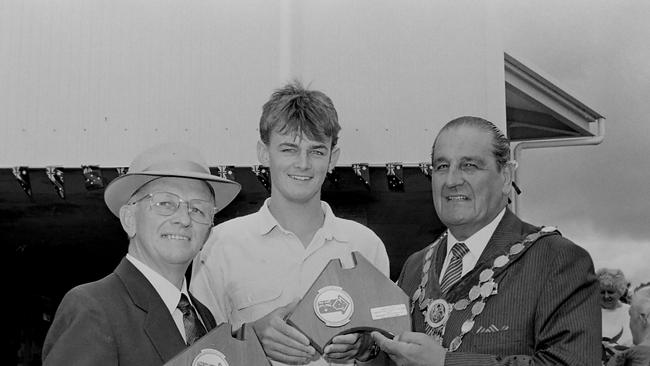
He’s someone who needs no introduction.
A swashbuckling batsman who revolutionised the role of the wicketkeeper-batsman in the modern era, Gilchrist is widely regarded as one of the greatest and most dangerous cricketers of his generation – and indeed, all time.
Born in Bellingen, Gilchrist’s family moved around NSW throughout his childhood, first to Dorrigo, then Junee and Deniliquin, before setting in Lismore when Adam was 12.
The son of Stan, a leg spinner who played grade cricket in Sydney, Gilchrist captained the Kadina High team and was a Lismore junior cricketer of the year before moving to Sydney to launch his career.
Gilchrist made his first class debut for NSW in 1992, however moved to Western Australia ahead of the 1994-95 season due to a lack of opportunities behind incumbent keeper Phil Emery.
He made his one-day international debut in 1996 but was forced to wait until 1999 to play his first test, against Pakistan at the Gabba. He played 96 tests and more than 270 ODIs over the course of his international career, with a highlights reel arguably longer and more spectacular than just about anyone else to play the game.
His 57-ball century against England at Perth in December 2006 is the fourth-fastest century in all Test cricket. He was the first player to have hit 100 sixes in Test cricket, his 17 Test centuries are the most by a wicket-keeper and his 16 in ODIs is second only to Sri Lanka’s Kumar Sangakkara.
Gilchrist was part of the Australia team that won three consecutive World Cup finals (in 1999, 2003 and 2007), with his 149 off 104 balls against Sri Lanka in the 2007 final rated one of the greatest World Cup innings of all time.
Gilchrist was also renowned for fairness, famously walking when he considered himself to be out, sometimes contrary to the decision of the umpire.
A regular vice-captain in both forms of the game, Gilchrist captained Test, ODI and Twenty20 International matches.
He retired from international cricket in 2008, although played domestic tournaments until 2013, was inducted into the Australian Cricket Hall of Fame in 2015.
Gilchrist has never forgotten his roots. He is patron of the Lismore branch of the Taverners, is a popular Australian cricket commentator and is often seen supporting grassroots cricket in his hometown.
Terry Greedy
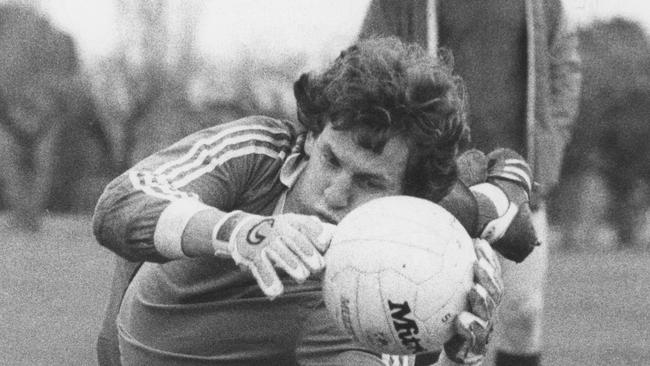
A late bloomer who went on to become a Socceroos great before retiring from international football in protest, goalkeeper Terry Greedy’s path to the top is unlike any other.
An Eastwood United junior, Greedy’s studies at teachers’ college in Lismore meant that he didn’t even leave for Sydney to trial with clubs until he was 23, and only made his NSL debut at 27 – an age at which some players are considered veterans.
Greedy spent much of his first NSL season at St George on the bench, however veteran coach Frank Arok named him in the starting side for the semi-final against Wollongong. He was man of the match, and backed that up with another man-of-the-match performance in the grand final as St George beat Sydney City.
When Arok became the Socceroo’s coach in 1983, he called Greedy into the national team. He was the keeper in 1985 for Australia’s World Cup qualifiers against Scotland, which featured the likes of Graeme Souness, Kenny Dalglish and Gordon Strachan in what is considered to be one Scotland’s greatest ever sides.
While playing in front of a packed Hampden Park was a career highlight, it proved to be Greedy’s final act for the national team.
In the lead up to the Scotland game the players were told that they wouldn’t be remunerated for their services by a broke Australian Soccer Federation, so Greedy returned serve by telling officials that he would retire from international football out of principle following the qualification campaign.
Despite playing just 36 times for the national team over a three-year period, of which 16 caps were full internationals, Greedy was named in the Socceroos’ Team of the Decade for the 1980s.
After retirement from football, Greedy put his teacher’s degree to good use, working as a teacher in Woy Woy on the Central Coast. Meanwhile back home he has been immortalised by local soccer authorities, with the Terry Greedy Medal awarded to the player of the match in the Far North Coast Premier League Grand Final.
Stuart Herne
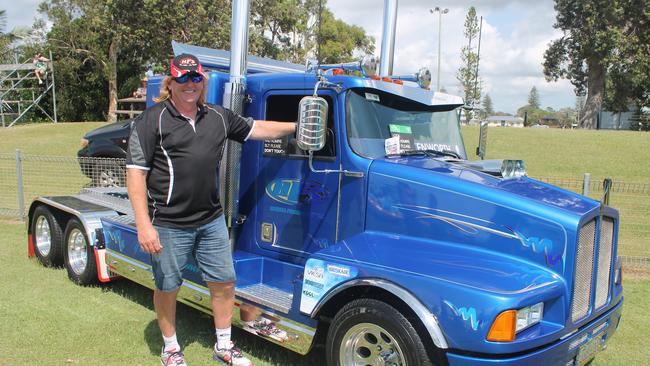
The head of a local motor racing dynasty and six-time national champion, Stuart Herne is synonymous with motorsport in Lismore.
Initially a kart racer, Herne switched a teenager into the high-octane world of speedway racing in 1986.
It proved to be a good decision. Herne won six V8 Dirt Modified division champion titles, as well as a plethora of cups, silverware and other medals throughout the course of his career.
He then made the headlines for all the wrong reasons in 2008 when he broke his C6 and C7 vertebrae after he crashed his buggy at 150 km and hour while contesting the Donald 500 off-road race in Victoria.
It took paramedics more than an hour to extract the father-of-three from the wreck, with a seven-hour operation needed to stabilise the fractured vertebrae with rods placed next to the injured spine and bone from his hip.
Herne pulled through, and has since been the chief mechanic for his three children and nephew, who are all keen racers.
His son Nathan is a two-time Trans Am Australian Champion and sprintcar driver, his daughters Bianca and Natasha have competed in Wingless Sprintcar championships, while nephew Josh is an accomplished karter.
Lurline Hook
A supremely talented diver, Lurline Hook was perhaps Lismore’s first female sporting champion.
Born in the Riverina town of Hay in 1915, Hook’s family moved to Lismore when she was a child.
A talented swimmer, Hook won a number of races as a child as part of Lismore swimming club meets.
However her real success came when she turned her attention to diving. At just 15 Hook won her first national title in the open women’s springboard event in Brisbane, becoming the first person from the country to claim the title.
Hook won the NSW diving championships six times, with her career highlight coming in the 1938 British Empire Games in Sydney.
Representing Australia in the 10-metre platform event, Hook claimed gold. She appeared on track to don the green and gold at the Olympics, however her dreams were dashed by the outbreak of World War II.
Hook remained in the Northern Rivers and died in Ballina in 1986.
Naazmi Johnston
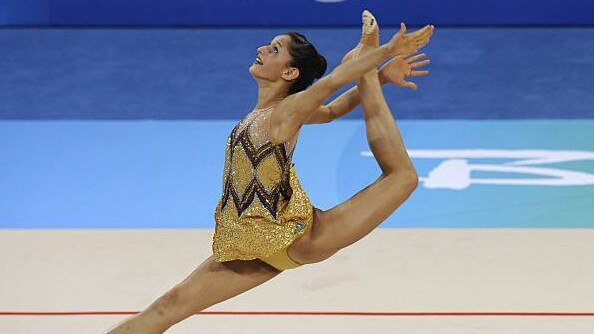
From a family of elite gymnasts, Lismore-born Johnston took the world by storm with an incredible five medals at the 2010 Commonwealth Games in Delhi.
Her first introduction to gymnastics was while watching older sister Shaneez – who herself won two silver and two bronze at the 1998 Commonwealth Games in Kuala Lumpur – go through her paces at Lismore‘s Police Citizens Youth Club, under the watchful eyes of coaches Margaret Watts and then Kim Haynes.
Showing plenty of promise from a young age, Naazmi would sit and watch her sister in the gym, before sneaking away to experiment with various apparatus on her own.
While her family moved to Sydney when Naazmi was eight, Johnston remains a favourite among Lismore gymnastics community, and is recognised as one of Australia’s most decorated rhythmic gymnasts.
All up, she won six Commonwealth medals across two games, including three gold and two silver in Delhi in 2010.
She also represented Australia at the 2005 World Rhythmic Gymnastics Championships, 2009 World Rhythmic Gymnastics Championships and 2008 Olympics, where she finished just outside the top 20.
Lyn Larsen
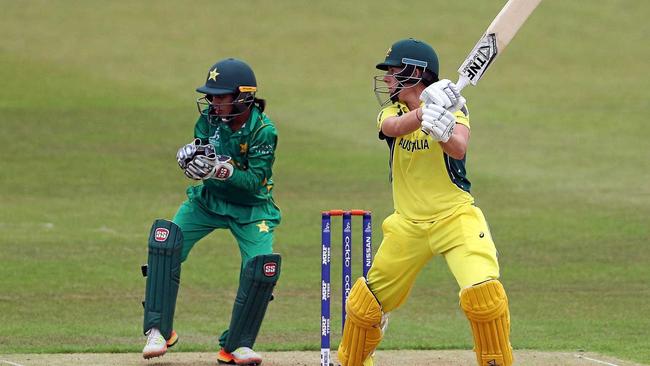
A pioneer who changed women’s cricket forever, Lyn Larsen is one of Australia’s most celebrated female cricketers.
Growing up on her parents’ farm at Tuntable Creek, Larsen’s first sporting love was actually tennis. It was only when at 14 one of her friends asked her to fill in for her cricket team on the weekend that her cricket career took off.
A talented leg-spinning all-rounder, the next year she made the Lismore team to compete at the Country Championships, then the NSW Country team, the NSW under-21 side and the year after that, in 1979, the open NSW team, aged just 16.
Larsen debuted for the national team during the 1984 tour of India, where she celebrated her 21st birthday.
Such was the esteem that she was held in by the cricketing establishment, in 1986 Larsen was made captain of the Australian team, aged just 22 – becoming the youngest person to achieve the honour in Australian cricket.
Over the course of her 10-year international career Larsen played 15 test matches, 10 as captain, with a batting average of 41 and bowling average of 18.73. She also played 49 ODIs, leading the team to a World Cup victory in 1988.
While the profile of women’s cricket has increased in recent decades, with some of the current crop on professional contracts, enjoying lucrative sponsorships and given the opportunity to play in front of 90,000, as the Australian team did in their victorious 2020 World Cup final, it was a far different story when Larsen was playing.
Interest in the women’s game was low, and instead of being paid, she and her teammates were forced to shell out every time they played for the national team or went on a tour.
However Larsen’s leadership and the Australian team’s during her playing career contributed to developing the profile and recognition of women’s cricket.
For her efforts, she was inducted into the Sport Australia Hall of Fame in 1999, the NSW Cricket Hall of Fame in 2010, while in 2020 the 59-year-old was awarded a Member of the Order of Australia for her contribution to women’s cricket.
Danny Lee

An uncompromising front-rower, “the ox” carved out a reputation as one of rugby league’s toughest men over the course of his 10-year professional career, which was launched with a premiership at home with his beloved Marist Brothers Rams.
While a number of top-line footballers have spent time in Lismore, either for school or with junior club sides, such as Casino’s King boys – Andrew, Chris and Matt – Gold Coast Titans outside back Brian Kelly or Nick Meaney from the Melbourne Storm, Lee was arguably the best Lismore local in recent decades.
He was an up-and-coming prop during the 1987 season, which saw the Rams dominate the Group One competition to claim the minor and major premiership double.
So good were the team’s performances, they were awarded the prestigious Clayton Cup, given to side judged to have been the best across Country NSW.
The following season Lee joined the Cronulla Sharks in the NSWRL, where he became a crowd favourite, playing 212 games for the club over the next 10 years and in the process becoming the club’s seventh most-capped Shark.
During his time at Cronulla Lee was named Dally M prop of the year in 1995, represented NSW Country in 1996, played in the Super League’s NSW representative side in 1997 and also made the Super League grand final with Cronulla, who ultimately went down to the Brisbane Broncos.
Lee was also named in the Australian Super League squad for the end of season tour of Great Britain, but did not play any test matches.
After retiring Lee returned home to Lismore and has remained involved with Marist Brothers, most recently coaching the first grade team in the 2020 season.
Islay Lee
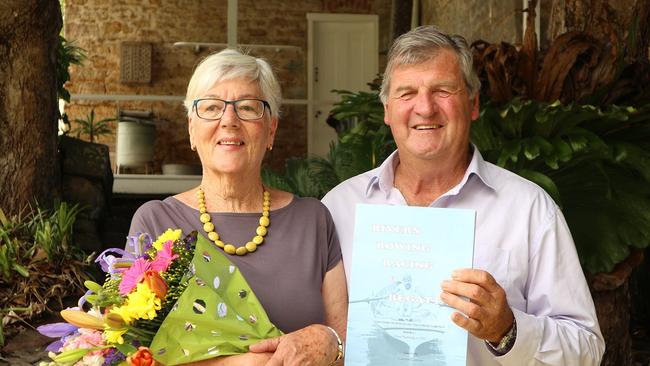
A dual Olympian, two-time world championship representative and, astonishingly, 15-time national champion, rower Islay Lee is one of Lismore’s most celebrated athletes.
Born and raised in Lismore, Lee moved to Sydney for university, where he rowed for the Sydney University Boat Club, Glebe Rowing Club and then enjoyed a long association with the Sydney Rowing Club.
All up, Lee won 15 national titles, with 11 of those coming in sweep-oared boats and four in the sculls.
Lee was part of Australia’s men’s eight for the 1976 Montreal Olympics. The games started off in incredible fashion for the team, who broke a new world record in their team to finish fastest for the final. However they could only manage fifth in the final.
He then represented Australia in the men’s eight in the 1977 and 1978 World Championships, with the team narrowly missing out on a medal in 1978, finishing fourth.
Lee became a dual Olympian in 1980 in Moscow, with the men’s eight once again finishing fifth in the final.
The Lismore product remained involved with the sport post-competitive rowing. He was a selector for both junior and senior national crews throughout the 1980s, and was president of Rowing Australia between 1994 and 1996.
Lee also worked as a teacher, and was a longtime headmaster of Rockhampton Grammar School, as well as the rowing coach at Brisbane Boys College.
David Mead
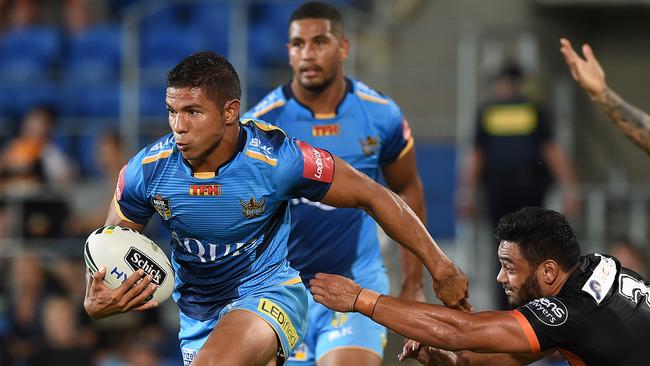
An international rugby league player who is role model to millions, David Mead has made a huge impact both on and off the football field.
Born in Papua New Guinea, Mead moved to Lismore at the age of 12 to live with his aunty. He attended Kadina High and Trinity Catholic College, and played rugby league for the Marist Brothers Rams.
A livewire outside back, Mead signed for the Gold Coast Titans straight from school. He ended up making 147 NRL appearances for the club across eight seasons.
With a nose for the tryline, Mead scored 67 tries for the Titans during his time with the club, and was the first player to reach 50 in the franchise’s history.
In 2017 he then joined the Brisbane Broncos for one season, before spending three years with the Catalans Dragons in the UK Super League, before returning to the Broncos in 2021 and 2022.
All up, Mead played 230 professional games in Australia and Europe, scoring 104 tries.
On the representative front, Mead played for NSW Country twice, in 2014 and 2015, and represented his country of birth 15 times, including captaining the Kumuls to the 2017 Rugby League World Cup.
Mead announced his retirement from professional rugby league in July, with his last game the Kumul’s 24-14 victory of Fiji in June.
The 34-year-old has been and remains a vocal advocate of the game in both regional Australia and PNG.
Adrian Meagher
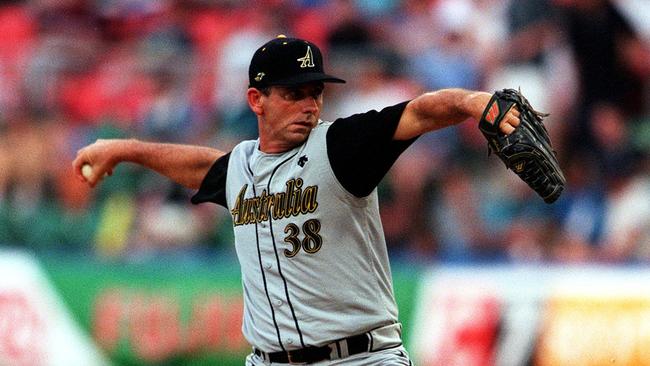
With a more than two-decade international career that included a home Olympics, Adrian Meagher is rated as not only one of Lismore’s but also Australia’s greatest pitchers.
The son of representative baseballer Adrian senior, the younger Adrian first started with softball at the age of nine before progressing to baseball.
After making a string of state and national junior rep sides as a teenager, Meagher made his debut for the Australian men’s team in 1977, and in total made more than 50 appearances for the national team over the next 23 years.
Considered the best pitcher in Australia throughout the 1980s and 1990s, Meagher caught the attention of US scouts while playing for Australia in the 1982 Amateur World Series.
He was subsequently signed by the Los Angeles Dodgers and played for the club’s feeder team, the Lethbridge Dodgers, in the minor leagues.
After playing for a string of teams in the US, the Lismore product was poised to become the first Australian to play major league baseball in the 20th century, but ultimately just fell short.
Following the establishment of the Australian Baseball league in 1989, Meagher joined the Gold Coast Clippers, later known as the Daikyo Dolphins, as a player-coach.
He was named Manager of the Year in the 1990-91 season, and backed this up by winning Pitcher of the Year and the competition’s MVP award the following season.
After hanging up his gloves in the mid-19990s and coaching the Australian national team, he came out of retirement and, at the age of 39, pitched for the national team in the 1999 Intercontinental Cup, in which the Australian team won its first ever gold in any major international competition.
In the gold medal game he gave up just one run in six innings in relief against the Cuba, and was named in the tournament All Star team as the top right-handed pitcher.
In 2000 Meagher then capped off a remarkable career by suiting up for Australia at the Sydney Olympics.
In a sign of his reputation and esteem within the baseball community, Meagher was among the initial inductees in Baseball Australia’s Hall of Fame in 2005.
Adam Pine
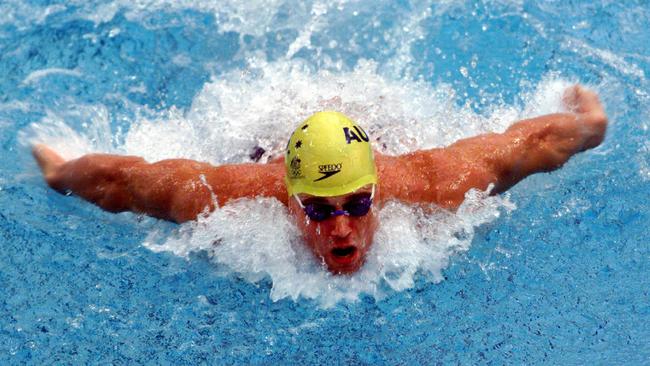
A three-time Olympian, quadruple Commonwealth Games representative with a swag of medals to his name that would be enough to weigh down any athlete, Adam Pine is quite possibly one of Australian swimming’s most underappreciated gems.
An Australian Institute of Sport scholarship holder, the former Lismore High student competed for Australia at three Olympics (2000, 2004 and 2008) four Commonwealth Games (1994, 1998, 2002, and 2006), as well as a series of Pan-Pacific and World Championships.
Pine, who specialised in butterfly and freestyle, won 18 medals at major tournaments across his glittering career.
In 2000 he famously swam in the heats for the gold (4x100-metre freestyle relay) and silver (4x100-metre medley relay) medal winning relay teams, while he also claimed silver in the 4x100-metre medley relay event eight years later in Beijing.
Meanwhile he also earned the rare distinction of medalling in four Commonwealth Games, including two bronzes (1994 and 2022) and a silver (1998) in the 100 metre butterfly.
Pine certainly didn’t walk away from swimming following his career in the pool, taking on a role of general manager of Community Sports at Swimming Australia, before working with the Paralympic Swimming Program for Swimming Australia and as Team Leader for the Australian Swim Team at the 2016 Rio Paralympics.
Nick Shailes

Softball might not have the highest profile, but for anyone in the know, Lismore’s Shailes is an absolute superstar.
The son of former NSW softballer Kayleen, Shailes first played softball at four and grew up following his mum around to softball games all over the country.
A gun junior who played for Far North Coast, NSW Country and then NSW rep teams, the 37-year-old made his debut for the national team, the Aussie Steelers, in 2006, and has been a regular in the national team set-up since.
Named in the ‘All World’ team on 10 separate occasions, Shailes moved to Canada to further his career in the International Softball Congress.
He has been awarded the Leading Hitter award in 2007 and 2016, named the Most Valuable Player in 2010, 2013 and 2015 and has won six International Softball Congress titles in 2010, 2011, 2013-15 and again in 2017 with two different teams.
He was also voted by his peers to be the best player in the world in 2015.
He has competed in five softball world cups, winning in 2009, and is currently preparing for his sixth, which starts on November 26 in New Zealand.
Sam Trimble

Widely regarded as one of the best cricketers never to play a test for Australia, Sam Trimble went on to become a legend of Queensland cricket.
Born in Lismore in 1934 and growing up in Booyong, “Slammin’ Sam” was right-handed opening batsman who scored a plethora of runs over the course of his career.
After struggling to break into the NSW state side, Trimble moved to Queensland, where he became a cricketing legend over the course of his 16-year career.
Despite scoring more than 10,000 runs at 41, including 26 first-class centuries, Trimble never played for Australia, with fellow openers Bill Lawry and Bob Simpson maintaining their stronghold on their positions throughout their – and Trimble’s – careers.
Trimble came close, being named as 12th man for Australia’s tour of the West Indies in 1964-65, while he also scored an unbeaten double century for the Australia second XI on their 1969-70 tour of New Zealand.
In recognition of his career, he was made a Member of the Order of the British Empire in 1975, received the Australian Sports Medal in 2000 and was named in Queensland Cricket’s Team of the 20th Century – holding the distinction of being the only one on the list not to have played test cricket.
After his career Trimble ran the indoor nets at the ‘Gabba in Brisbane, while the sports field at Bexhill was named in his honour.
Forever generous with his advice, he providing meticulous and enthusiastic coaching to athletes of all sports, and worked with Ian Healy in the 1990s to improve his batting for Australia.
Trimble’s son, Glenn, an all-rounder who played for Queensland throughout the 1980s, managed to do what he father couldn’t, and played two ODIs for Australia in 1986.
Sam Trimble passed away in July 2019, aged 84.
Vote: who is Lismore’s greatest sporting legend?
Below we have compiled a shortlist of the some of Lismore’s greatest sporting legends, including those who reached the very top of their chosen sport. Vote for your favourite local sporting hero.




